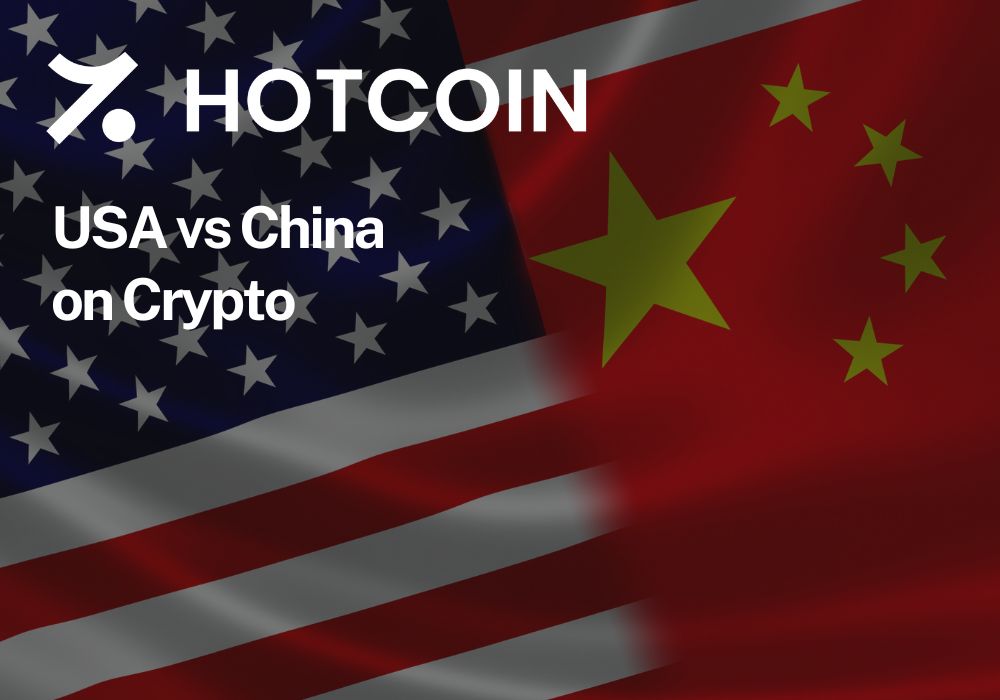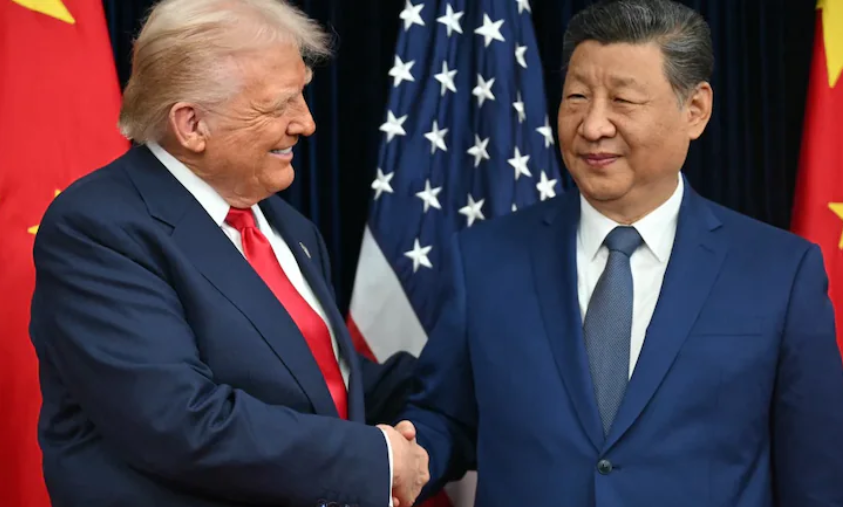
In recent weeks, the meeting between Donald Trump and Xi Jinping has stirred global headlines, not just because of diplomacy or trade, but because of the subtle signals about how the world’s two largest economies view cryptocurrencies. For the crypto industry, this matters deeply. The United States and China are not just players in the game, they help define the rules, steer innovation, and influence global sentiment. In this article, we peel back the layers of the U.S. and China’s contrasting attitudes toward crypto, and explore how each is shaping the global crypto ecosystem.

The U.S. Crypto Attitude: Innovation + Ambiguity
In the United States, the “wild west” era of cryptocurrency seems to be evolving into a more structured, but still dynamic landscape. On one hand, U.S. regulators such as the Securities and Exchange Commission (SEC) and the Commodity Futures Trading Commission (CFTC) have pushed forward frameworks viewing certain digital assets as securities or commodities. At the same time, political leadership under Trump’s renewed crypto-friendly posture has signalled a shift toward embracing crypto as a strategic technology. For example, in early 2025 the U.S. government announced plans for a “Strategic Bitcoin Reserve” and a national digital asset stockpile.
What does this mean for the industry? It means the U.S. is balancing two things: opportunity and risk. On the one hand, the U.S. is encouraging institutional adoption, product innovation (e.g., spot Bitcoin ETFs), and stablecoin regulation, and wants to keep its edge in financial technology. On the other hand, the regulatory framework remains fragmented and sometimes unpredictable. The U.S. lacks a single unified crypto regulator as oversight is split among the SEC, CFTC, and others, with both state and federal jurisdictions.
What stands out is that the U.S. is increasingly viewing crypto as part of its strategic future rather than just a speculative asset class. One prominent comment: “If China is leaning away from Bitcoin, then maybe the U.S. ought to be leaning into Bitcoin.” This suggests a mindset shift: crypto isn’t simply an investment vehicle as it may be a component of economic competitiveness.
For global markets, that matters: U.S. institutions may lead global flows, regulatory clarity may unlock major investment, and U.S. policy may set the tone for other jurisdictions.
China’s Crypto Attitude: Control + Caution
Meanwhile, China’s stance on cryptocurrencies has been far more conservative, and driven by very different priorities. One of the core principles: maintaining monetary control, reducing financial risk, and protecting the yuan’s dominance. As early as 2017, China banned ICOs and ordered major domestic crypto-exchange closure. Subsequent actions culminated in China’s 2021 crackdown on crypto mining and trading, marking a strong policy position: crypto speculation must be contained. Viewed by Chinese regulators as a virtual commodity (not legal tender), crypto remains permitted to exist in some form but tightly regulated.
China’s strategy is less about “let’s see what happens” and more about “we will control it.” For example, the issuance of a digital yuan (e-CNY) is part of the broader Chinese agenda to drive central bank digital currency adoption rather than decentralized crypto speculation. Meanwhile, mining and trading operations in Mainland China have been curtailed, pushing much of the global mining industry to relocate. China still exerts influence through manufacturing, mining hardware supply, and global trade flows, but its domestic attitude toward free crypto markets is restrictive.
At a global level, how does China’s policy play out? Because China controls such a big piece of the mining infrastructure, its policies ripple worldwide. When China banned mining, global hash rates dropped and then jurisdictions like the U.S., Kazakhstan and elsewhere picked up the slack. For traders and investors, China sends a message: “Crypto growth must be in line with state priorities, not outside them.”
Diverging Paths, Converging Impact
Though the U.S. and China differ dramatically in approach, their influence on the crypto ecosystem shares one common trait—they both shape the environment in which crypto operates globally.
Innovation vs Regulation
The U.S. path emphasizes innovation—allowing institutions to explore crypto products, positioning the country as a hub for digital-asset finance, and aligning crypto with national tech leadership. Meanwhile China emphasizes regulation: restricting trading, shutting down mining, and focusing on state-controlled digital currency as a strategic instrument.
Market Signals
When the U.S. signals openness (such as moves toward a Bitcoin reserve or stable-coin framework): the market responds. Institutional inflows follow, projects breathe easier, and global sentiment brightens. When China signals restriction (such as mining bans or exchange crackdowns): markets similarly feel pressure, especially around hash-rate distribution, mining industry migrations, and supply-side constraints.
Global Reach
The U.S. sets institutional tone. Its regulatory decisions, Supreme Court filings, and legislation (like the GENIUS Act on stablecoins) ripple outward to global markets. At the same time, China’s decisions show how crypto interacts with broader state ambitions: monetary sovereignty, digital currency leadership, supply-chain dominance. These factors shape mining, hardware, and even global trade flows.
Risk & Opportunity
For investors, the U.S.-China contrast offers a dual lens:
- The U.S. offers opportunity, but also regulatory uncertainty—a moving target of lawsuits, frameworks and shifting priorities.
- China offers certainty of restriction—you know what the rules are (tight) but fewer opportunities for growth within Mainland crypto markets.
What This Means for the Crypto Industry & Investors
Strategy Adaptation
Crypto firms and traders must adapt to both realities. If you’re targeting institutional flows or U.S.-based investment vehicles, pay attention to U.S. regulatory signals and clarity. If you’re in mining, hardware or manufacturing, China’s policy moves are crucial.
Geopolitical Aspects
Crypto increasingly plays into geopolitics. With Biden or Trump in the White House and tensions between China and the U.S. over technology, trade and currencies, crypto is no longer just an asset as it’s part of the strategic equation. For instance, U.S. remarks on using Bitcoin as an advantage over China highlight this shift.
Global Influence of Exchanges & Mining
Major Chinese-manufactured mining hardware, often used globally, still ties China to crypto even if domestic trading is restricted. Simultaneously, U.S. exchange listings, product roll-outs, and regulatory developments form the growth front. Firms like Hotcoin and other global platforms need to navigate both zones.
Diversified Portfolios
From an investor’s perspective, global diversification matters. While many will focus on U.S.-compliant assets and ETFs, others may look at mining or infrastructure exposure influenced by China. Knowing how regulation may swing helps you tilt exposure accordingly.
Thoughts about USA vs China on Crypto
The recent Trump–Xi meeting may not have featured crypto as the main agenda, but the backdrop is clear: as global superpowers, both the U.S. and China define much of crypto’s future landscape. The United States is driving toward institutional adoption and global leadership in digital assets. China, meanwhile, insists on controlling the space domestically and aligning crypto with broader state objectives.
For the crypto ecosystem (whether you’re a trader, investor, platform, or miner) understanding these two strategic approaches is critical. The U.S. offers growth potential with variable regulation; China offers structural certainty with tight control. Your strategy should reflect where opportunity and risk converge.
In short: watch the U.S. for where innovation and capital flow; watch China for how power, supply chains and policy control resource distribution. Together they won’t just influence crypto, they’ll steer it. And for a global platform like Hotcoin, keeping an eye on both remains key to navigating the future of digital assets.
Your Trades. Our Priority. Hotcoin.
Hotcoin Official Site: https://www.hotcoin.com
Hotcoin Twitter: https://x.com/HotcoinGlobal
Hotcoin Telegram: https://t.me/HotcoinEX
Hotcoin Chinese Twitter: https://x.com/hotcoinzh
Hotcoin Chinese Community: https://t.me/hotcoinglobalcn
Hotcoin YouTube: https://www.youtube.com/@hotcoinglobal
